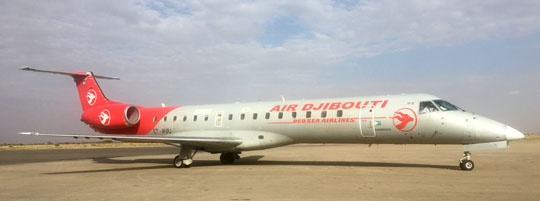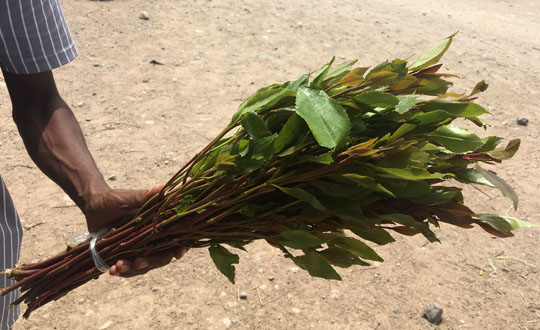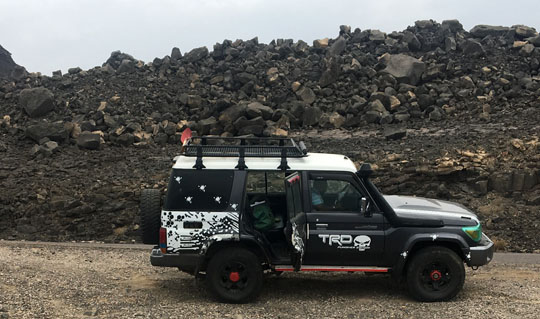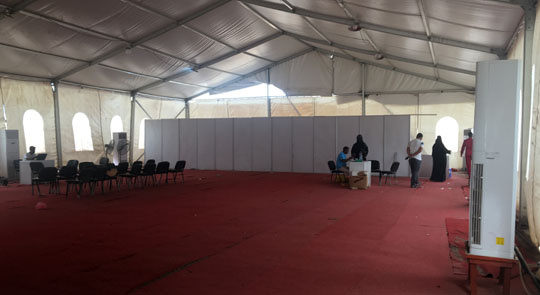Somaliland & Djibouti – Cars & Planes & Other Distraction
Monday, 8 August 2022Somaliland to Djibouti
So how do you get from Somaliland to Djibouti? Check Travel Scanner or Google Flights and you will be told the only way is via Ethiopia with Ethiopian Airlines. In fact you can fly direct in about 40 minutes with Air Djibouti – the Red Sea Airline – and book on their website.
 ▲ The aircraft is a neat little Embraer ERJ-145 and there’s a nice little back story to Air Djibouti. After being closed down for more than a decade the airline took to the skies again in 2016, managed by Cardiff Aviation in Wales, UK. And who owns Cardiff Aviation? Bruce Dickinson, front man of heavy metal band Iron Maiden and licensed pilot, when Iron Maiden is on tour he flies their aircraft with all their equipment on board. The first Air Djibouti ERJ-145 was flown to Djibouti by Mr Dickinson, but unfortunately he wasn’t at the controls for my flight.
▲ The aircraft is a neat little Embraer ERJ-145 and there’s a nice little back story to Air Djibouti. After being closed down for more than a decade the airline took to the skies again in 2016, managed by Cardiff Aviation in Wales, UK. And who owns Cardiff Aviation? Bruce Dickinson, front man of heavy metal band Iron Maiden and licensed pilot, when Iron Maiden is on tour he flies their aircraft with all their equipment on board. The first Air Djibouti ERJ-145 was flown to Djibouti by Mr Dickinson, but unfortunately he wasn’t at the controls for my flight.
What about travelling between the two countries by land? Straight line it’s only 250km, by road it’s more like 400km and it is definitely not a good road. Count on eight to 10 hours travel if the road is open. Reportedly the road was not open due to the pandemic, but who knows, you’re told one thing and if you try hard enough you might find reality is very different. I didn’t try, but Juan Martinez has a good report on taking that overnight trip. He left Djibouti late afternoon and got into Hargeisa soon after dawn the next day.
Chewing Khat
So where’s all the khat, the great distraction/problem of Yemen, Djibouti and Somalia? Google tells me that ‘Khat or qat is a flowering plant native to eastern and southern Africa. Khat contains the alkaloid cathinone, a stimulant, which is said to cause excitement, loss of appetite, and euphoria’. ‘Like chewing a privet hedge,’ I also read.
The reality is that although a large segment of the male population is effectively addicted you simply don’t see it. Chewing is a social group thing and done behind closed doors so it’s not visible. But 1300 (1pm) every day is the peak hour as truck-loads of khat, raced in from Ethiopia, arrives on the streets. There’s considerable urgency to get the best khat while it’s fresh and green.
 ▲ We stopped at a khat stand as we crossed the Grand Barra in Djibouti, heading back to the city. This nice fresh bunch cost me US$10.
▲ We stopped at a khat stand as we crossed the Grand Barra in Djibouti, heading back to the city. This nice fresh bunch cost me US$10.
Nasty Cars
I was not at all enthusiastic about the cars of Somaliland and Djibouti. In Somaliland the craze for darkened windows sometimes seemed so extreme you couldn’t see out of the car, let alone see in. This is not a kind environment for cars either, they’ve already had one life on the streets of Tokyo or Kyoto and Hargeisa soon leaves them battered looking.
 ▲ Akram’s blinged up Toyota Land-Cruiser at The Volcanos near Lake Assal – Akram was my driver-guide in Djibouti and his Land-Cruiser was certainly the bling winner, the door decal announces that it’s the Punisher Edition
▲ Akram’s blinged up Toyota Land-Cruiser at The Volcanos near Lake Assal – Akram was my driver-guide in Djibouti and his Land-Cruiser was certainly the bling winner, the door decal announces that it’s the Punisher Edition
Covid Tests
Most places in the world – the first world at least – have been winding back on the Covid testing requriments. I didn’t have to be tested leaving Australia, entering the UK or Italy. In Africa it was a different question although touristy Uganda had no requirements. Somaliland, however, required a pre-arrival test and a departure test, both the more expensive PCR tests as well. I had to get the pre-arrival test done in Kampala, Uganda the afternoon before I flew out so that was a pricey US$120.
In Hargeisa I was tested the morning after I arrived for US$45, Abdilahi took me to the test centre when it opened at 0700 and there was already a long queue. ‘It’s OK,’ he said, ‘I came here after morning prayers at 0400, but I was already 2nd in line.’ In Djibouti everybody was given a rapid test for US$30 as soon as we got off the aircraft, before we even got to immigration. Since I also had to get a visa-on-arrival – US$30 again – it took a long time to get out of the airport. Amusingly the e-visa application, which I didn’t manage to complete, required an enormous amount of information. The visa-on-arrival required nothing at all, except the US$30.
 ▲ The next morning I was doing another test, a PCR this time, but US$30 again, in a testing centre which looked all but derelict. Presumably they aren’t going to keep this going much longer? This must have been a test for departure because the paperwork was inspected more than once at the airport check in. If I’d failed? No idea, but perhaps I would have had to isolate in Djibouti City for 5 days or 7 days or 10 days or something before I was allowed to leave? I don’t want to think about it.
▲ The next morning I was doing another test, a PCR this time, but US$30 again, in a testing centre which looked all but derelict. Presumably they aren’t going to keep this going much longer? This must have been a test for departure because the paperwork was inspected more than once at the airport check in. If I’d failed? No idea, but perhaps I would have had to isolate in Djibouti City for 5 days or 7 days or 10 days or something before I was allowed to leave? I don’t want to think about it.






